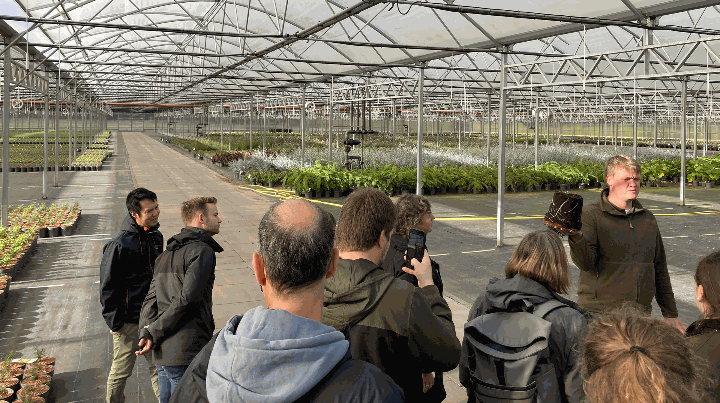BUFFER+ Partner Meeting in the Weser-Ems region: peat extraction, renaturation, and peat substitutes
The third BUFFER+ partner meeting, held from October 8 to 10, 2024, focused on peat extraction, moor renaturation, and peat alternatives for horticultural substrates in the Weser-Ems region of northern Germany.
Peat extraction
and environmental challenges
Peat has been extracted in the Weser-Ems region for centuries, becoming a major
industry by the mid-20th century. However, its significant CO2 emissions have
prompted the German government to adopt a peat reduction strategy, aiming for
peat-free plant soils by 2026 for hobby gardening and by 2030 for professional
growing media. Many peat extraction licenses will soon expire, creating
uncertainty for local industries.
Peat substitutes
in horticulture
Partners visited Hinrichs
Pflanzen, a 40-hectare nursery, where half of
the plants are grown in peat-free substrates like coconut coir and wood fibers.
These alternatives are more expensive, but modern irrigation helps offset
challenges like lower water retention. Hinrichs Pflanzen is one of five nurseries in the ToSBa project (Peat-Reduced
Substrates in Nursery Practice), which
demonstrates how high-quality plants can be produced using peat-reduced
substrates. While customer acceptance is still developing, the nursery’s
involvement highlights the potential for reducing peat use in professional
horticulture.

Large-scale peat extraction
and renaturation
The group also visited Saterländer
Westermoor, a 5,000-hectare raised bog, where
peat is extracted for horticulture. Extraction stops once the peat reaches 0.5
meters, and the area is undergoing rewetting for renaturation. The Torfwerk Moorkultur
Ramsloh uses peat for substrates but also develops peat substitutes and is
partner in the MOOSland project, which cultivates Sphagnum moss as a peat substitute offering a
sustainable alternative to peat.

Tour of Ökowerk
Emden, presentations and communications workshop
On the final day, partners presented their progress on peat substitutes and
other BUFFER+ projects. The University of Applied Sciences Emden/Leer showed for example a nice video about a day in the lab analysing HTC-treated peat substitutes. Watch the video here.
The group also toured Ökowerk Emden, where they enjoyed an apple tasting in the center's orchard. During the tour, partners shared results from their research into peat substitutes, such as reed and grass from wet meadows. HTC Innovation GmbH and CAPDL also demonstrated hydrothermal carbonization (HTC), a process that converts plant materials into peat-like substrates.
Additionally, a communications workshop was held to map out stakeholders and strategies for effective communication within BUFFER+. This session focused on finding the best ways to communicate our message to different stakeholders, ensuring that the right information reaches the right audience.

Peat substitutes
and challenges ahead
Sphagnum moss, coconut coir, and wood fibers are promising substitutes, but
challenges remain in terms of cost, scalability, and availability. Coconut
coir, for example, must be imported from Southeast Asia, making it expensive.
Other materials like compost and miscanthus grasses can partially replace peat
but are not a full substitute.
The meeting highlighted the importance of collaboration in advancing peatland conservation and climate-friendly alternatives for horticulture.
Have a look at some extra photos of the teammeeting:





